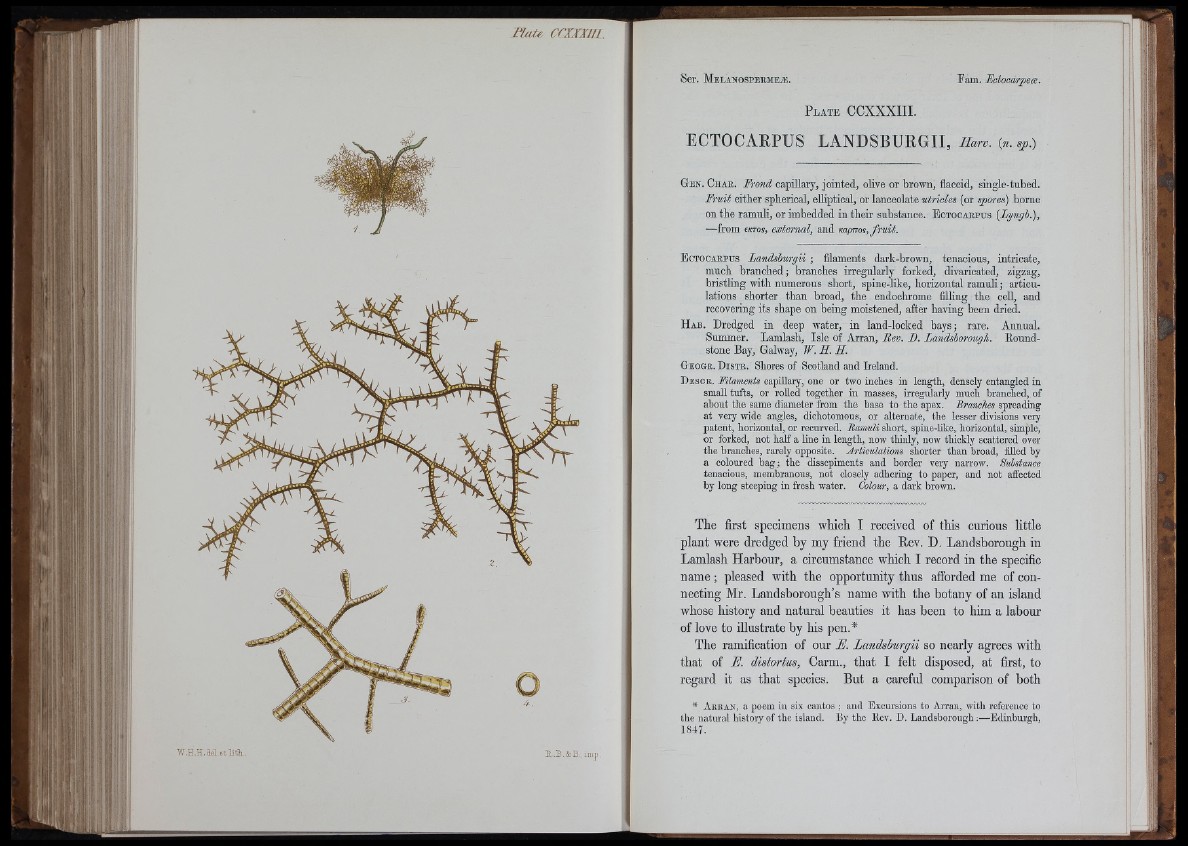
TlaU CCXIUIL
W .H .H . i e l . e t l i t L . R - B . i c R . im p .
P l a t e CCXXXIII.
ECTOCARPUS LANDSBURGII, Harv. {n.sp.)
Ge n . Ch a r . Erond capillary, jointed, olive or brown, flaccid, single-tnbed.
F ru it either spherical, elliptical, or lanceolate utricles (or spores) borne
on the ramuli, or imbedded in their suhstance. E ctocarpus {Lyngh.),
—from €KTos, external, and safmos, f r u i t .
E ctocarpus Landshurgii ; filaments dark-brown, tenacious, intricate,
much branched; branches irregularly forked, divaricated, zigzag,
bristling with numerous short, spine-like, horizontal ramuli ; articulations
shorter than broad, the endochrome filling the cell, and
recovering its shape on being moistened, after having been dried.
H a b. Dredged in deep water, in land-locked b a y s ; rare. Annual.
Summer. Lamlash, Isle of Arran, Rev. B .
stone Bay, Galway, W. I I. E .
G e o o r . D is t r . Shores of Scotland and Ireland.
Round-
D e s c k . Mlaments capiUaiy, one or two inches in length, densely entangled in
small tufts, or rolled together in masses, irregularly much branched, of
about the same diameter from the base to the apex. Branches spreading
at very wide angles, dichotomous, or alternate, the lesser divisions very
patent, horizontal, or recurved. Ramuli short, spine-like, horizontal, simple,
or forked, not half a line in length, now thinly, now thickly scattered over
the branches, rarely opposite. Articulations shorter than broad, filled by
a coloured bag; the dissepiments and border very narrow. Suhstance
tenacious, membranous, not closely adhering to paper, and not affected
by long steeping in fresh water. Colour, a dark brown.
The first specimens which I received of this curious little
plant were dredged by my friend the Rev. D. Landsborough in
Lamlash Harbour, a circumstance which I record in the specific
name ; pleased with the opportunity thus afforded me of connecting
Mr. Landsborough’s name with the botany of an island
whose history and natural beauties it has been to him a labour
of love to illustrate by his pen.*
The ramification of our E. Landshurgii so nearly agrees with
that of B. distortus, Carm., that I felt disposed, at first, to
regard it as that species. But a careful comparison of both
* A r r a n , a poem iu six cantos ; and Excursions to Arran, with reference to
the natiu’al history of the island. By the Rev. D. Landsborough :—Edinbui'gh,
1847.
I
i I ' l